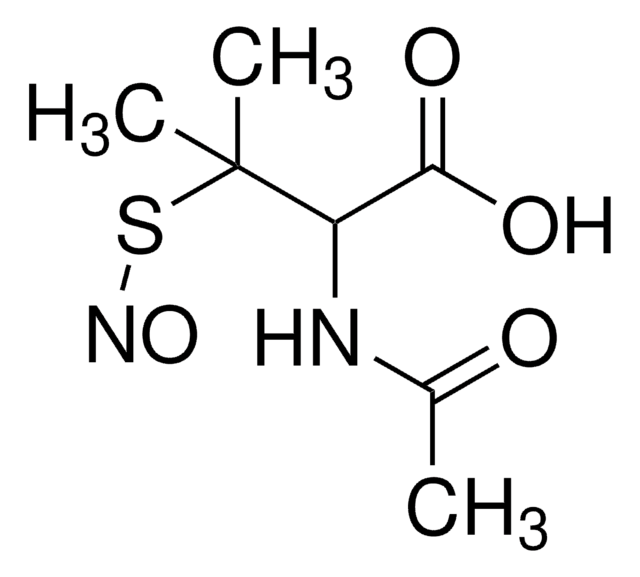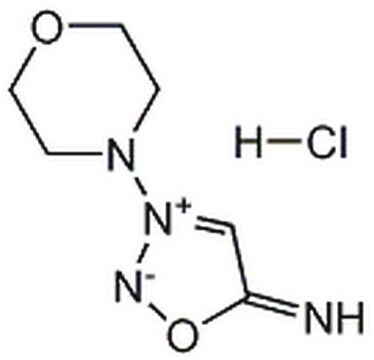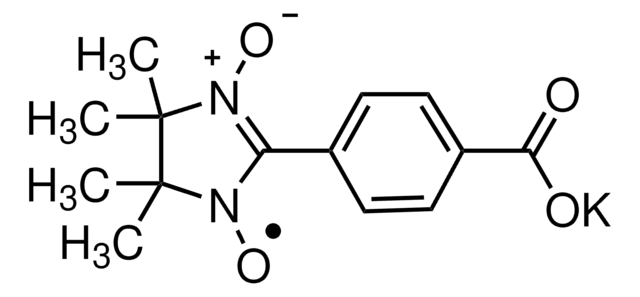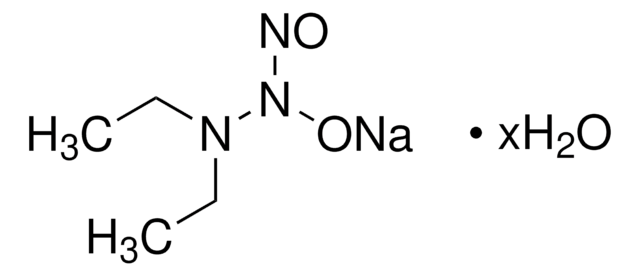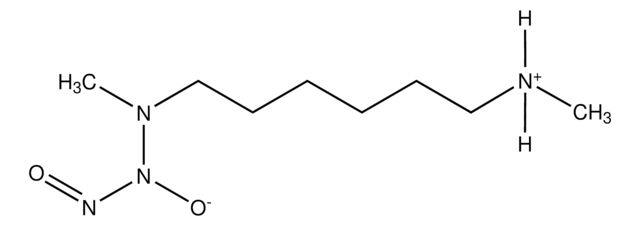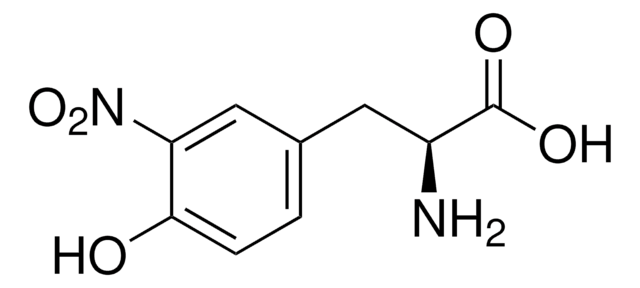N4148
S-Nitrosoglutathione
≥97%
Synonyme(s) :
GSNO, SNOG
About This Item
Produits recommandés
Niveau de qualité
Essai
≥97%
Forme
powder
Solubilité
water: soluble 19.60-20.40 mg/mL
Température de stockage
−20°C
Chaîne SMILES
N[C@@H](CCC(=O)N[C@@H](CSN=O)C(=O)NCC(O)=O)C(O)=O
InChI
1S/C10H16N4O7S/c11-5(10(19)20)1-2-7(15)13-6(4-22-14-21)9(18)12-3-8(16)17/h5-6H,1-4,11H2,(H,12,18)(H,13,15)(H,16,17)(H,19,20)/t5-,6-/m0/s1
Clé InChI
HYHSBSXUHZOYLX-WDSKDSINSA-N
Description générale
Application
- as a standard in reversed phase chromatography coupled to chemical vapour generation and atomic fluorescence detector (RPC-CVGAFS) and reversed phase chromatography fluorimetric (RPC-FD).
- as a standard in spectrophotometric and high-performance liquid chromatography (HPLC) assay.
Actions biochimiques/physiologiques
Code de la classe de stockage
11 - Combustible Solids
Classe de danger pour l'eau (WGK)
WGK 3
Équipement de protection individuelle
dust mask type N95 (US), Eyeshields, Gloves
Faites votre choix parmi les versions les plus récentes :
Déjà en possession de ce produit ?
Retrouvez la documentation relative aux produits que vous avez récemment achetés dans la Bibliothèque de documents.
Les clients ont également consulté
Notre équipe de scientifiques dispose d'une expérience dans tous les secteurs de la recherche, notamment en sciences de la vie, science des matériaux, synthèse chimique, chromatographie, analyse et dans de nombreux autres domaines..
Contacter notre Service technique

